Chapter 3. Urban, Industrial, and Divided: Socio-Economic Change, 1867-1920
3.6 Craft and Industrial Unions
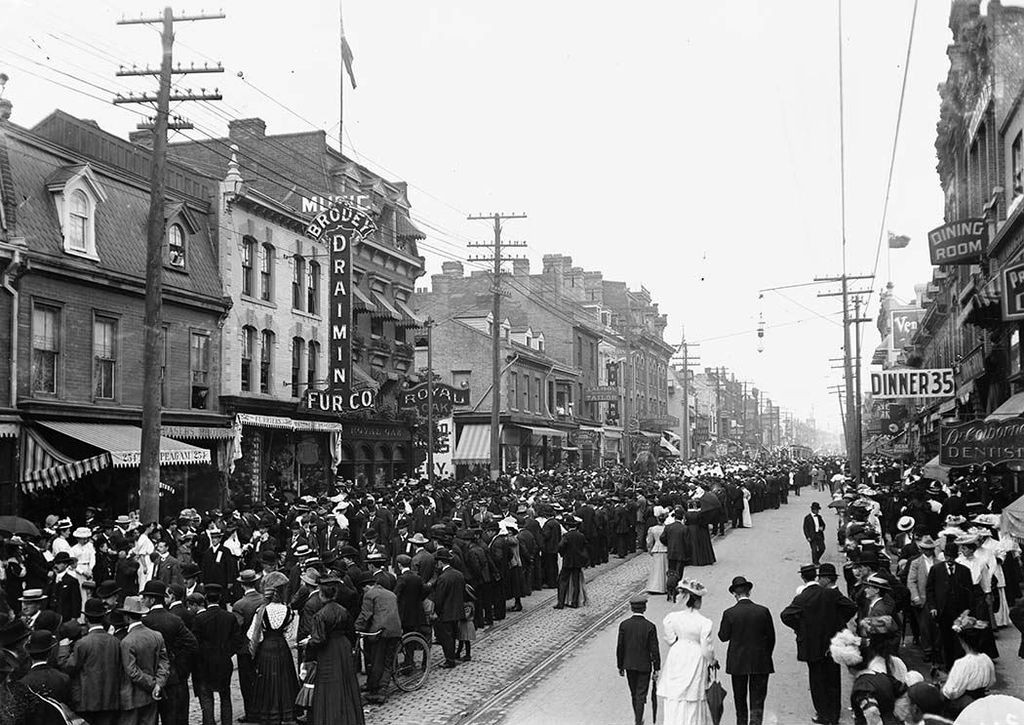
In the 19th century, there was little in the way of what we call collective bargaining. Workers regularly entered into contracts directly with employers where the terms may or may not have been standardized. Typically, employers would post a scale of pay as a means of attracting employees but variations could occur. The implications of this situation could be severe. Going on strike constituted a breach of contract between the employer and the individual employee, making the worker liable to dismissal, legal liability (including fines), and even jail time.
The British Masters and Servants Act still prevailed in the Dominion in the 1870s. Elements of it would survive for decades due to the divided constitutional responsibility for labour: federal and provincial laws both came into play. As one study demonstrates:
Fines and imprisonment for simple breaches of employment contracts remained available in several provinces, and in the Dominion employment jurisdiction, well into the 20th century. […] Despite the brave promises of its preamble, the true policy of the [Dominion’s labour law] was not to place employers and workers on a footing of legal equality, but to leave the provinces to their own devices while seeming to be doing something to keep the trains on time.[1]
In short, the Trade Unions Act of 1872 offered little to organized labour other than to recognize its growing importance on the Canadian political and economic landscape.
Tory and Liberal politicians both recognized a constituency in the making when they looked at the working class, but their first instincts were to support employers and the economic viability of Canada. That should hardly come as a surprise. Canadian democracy before the 1870s extended only to adult male property owners: the fathers of Confederation were white-collar professionals, merchants, and landowners, not artisans (let alone factory workers). As regards labour relations, the goals of Confederation (at both the federal and provincial level) were to achieve stability and reduce the possibility of workplace and strike violence, and to do that through increased regulation of labour associations. In the face of an obvious alliance between the provincial and federal state and employers, working people took a page from the book of labour elsewhere and began to organize so as to mitigate their weaknesses and amplify their voice.
The Nine Hour Movement
Local unions have their own histories and, therefore, the history of labour in Canada is the tale of a great many organizational processes and struggles. As a whole, however, Canadian labour in the 19th century could turn to a handful of events that were landmarks in the development of a working class.
The first of these was the Nine Hour Movement. Spurred by similar movements in Britain and the United States, agitation for a standardized workday began early in 1872, spreading outward from a hub in Hamilton. The Movement failed at this time, damaged by the decision of George Brown’s employees in the Typographical Union to pursue their own agenda separately. The ongoing political rivalry between Brown and John A. Macdonald also played a role. Macdonald saw the strike at Brown’s shop as an opportunity to undermine his opponent: he supplied funds to the printers, shoring up their Ontario Workman newspaper through the strike. While this intervention cost organized labour their Nine Hours, it presented a separate opportunity of sorts. In the aftermath of the strike, Macdonald cleared away the most repressive of federal anti-union laws and introduced the Trade Unions Act, 1872.
Historians have weighed Macdonald’s motivations in promoting this legislation. Was he hoping to co-opt the labour movement and to ensure it could be regulated? Was he making a concession to unions which he saw as a necessary evil and an imminent reality? Was he hoping to win the support of the emergent working class by championing their ability to organize? Alternatively, was he merely playing catch-up with Britain? There, the Trade Union Act of 1871 legalized unions for the first time. It has been suggested, in this regard, that Macdonald was anxious to ensure that Canada remained appealing to potential British emigrants and worried that an archaic attitude toward labour organizations would deter engineers and other skilled workers from coming to Canada. Whatever Macdonald’s motivations, the Act opened up enough room that year for the establishment of the first attempt at a national labour centre: the Canadian Labour Union (CLU).
The CLU had the misfortune of arriving just as a severe economic downturn took hold. It collapsed within three years. In the next decade, however, local Trades and Labour Councils would be established in the major cities, and from these would arise the successor institution, the Trades and Labour Congress of Canada (TLCC) in 1883. This organization had far greater staying power and survives to this day (though considerably altered) in the form of the Canadian Labour Congress (the CLC).
Craft Unions
The older crafts – accessed through long apprenticeships — were the first to organize and did so before Confederation. Craft unionists had employed several tactics to secure favourable conditions in the workplace. One of their concerns regarding skilled workers — raised repeatedly — was that mechanization, new production systems, and intensification of supervision would cost them their independence and devalue their experience. As deskilling progressed, some of these unions advised their members against training new craftsmen so as to control the supply (and thus the price) of their labour. They also opposed competition from prison labour, unapprenticed workers, child labour, and the exploitation of immigrant workers who might accept lower wages.[2] The craft workers are sometimes described as the aristocracy of labour, the best paid and most highly skilled community of workers. Respectability was highly valued among craft workers and their ideal in terms of industrial relations was a respectful relationship with employers in which they would be treated as equals in an emergent liberal democratic order. This meant that, at times, the craft workers’ inclination was to draw a line between themselves and unskilled labour.
The Knights of Labor
Several omnibus labour organizations flourished and then fizzled-out in the period between Confederation and 1920 — three in particular. Of these, the first provides a transition between the old crafts-based organizations and the new trade unions. It recognized the connected agendas and priorities of labour in the broadest sense. This was the Noble and Holy Order of the Knights of Labor.[3]
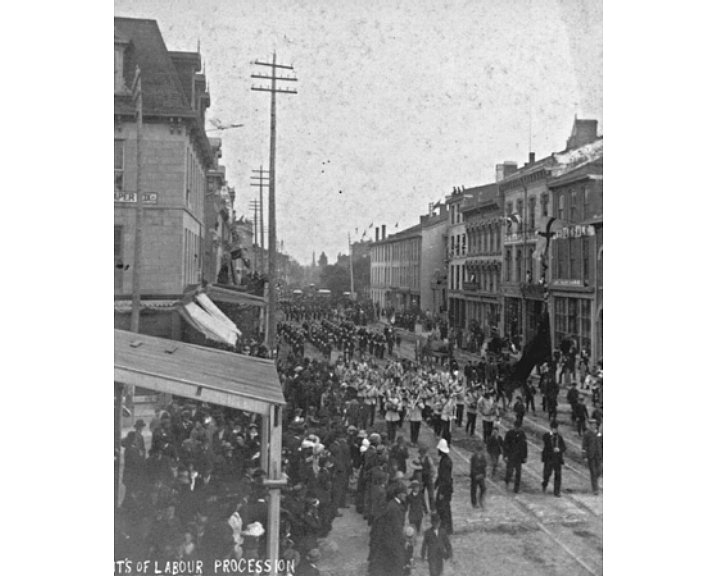
Drawing on the traditions of secret societies, benevolent associations, and religious symbolism, the Knights had at least as much in common with fraternal orders — like the Masonic Lodge — as they did with the trade unions that followed. Founded in Philadelphia in 1869, the Knights crossed the border into Canada in the 1870s.
The Knights were enormously popular for several reasons. They drew all trades and crafts under their umbrella, included men and women, promoted temperance with regard to alcohol, and in the early years, their organization was shrouded in the mystery of secret rituals. The movement — and it was a movement in that it touched many aspects of life and spoke to a whole way of being, and not just industrial relations — was deeply imbued with the idea of a respectable working class. The older, skilled crafts that shared a common tradition of artisanal training and discrete organization in an era when unions were illegal put their stamp on the attitude and approach of the Knights. Its membership, however, was much broader.
In Canada, the Knights were noteworthy for their organizational skills and also for pulling into one body workers from English- and French-Canada. The Knights were also popular in the less industrialized communities of the West and extremely popular among workers in British Columbia. Their vision of a revitalized and reformed society, economy, and democracy had an enormous and general appeal in an era of rapid change and wild fluctuations in employment opportunities:
Somehow their moral outrage and vision of a more communitarian alternative caught the mood of thousands of anxious workers, who were prepared to take a stand against the dominant social and economic developments of the late 19th century. The sense of a great moral crusade was in the air.[4]
The Knights, of course, had enemies; in Canada the Catholic Church of Quebec was in the forefront. Archbishop Taschereau (1820-98) went so far as to issue an excommunication decree which forbade good Catholics from membership in the Knights.[5] Did the Archbishop’s fulminations matter? The Vatican told him to retreat, and in the year that followed nearly two-dozen new local assemblies of the Knights were established in Montreal.[6] (The Knights did, however, drop the “Noble and Holy Order” title in the 1880s because Catholic members and clergymen were troubled by the apparent connection with Freemasonry.) The Knights had less success in Nova Scotia, where workers were reluctant to join this international organization. There, an indigenous working-class body — the Provincial Workmen’s Association — filled the space that was elsewhere occupied by the Knights.
Although the Knights were largely inclusive, the door was not open to everyone. Bankers, lawyers, stockbrokers (and speculators in shares), and liquor vendors were not welcome — nor was Asian labour. The Knights were partially colour-blind in that they included African-Americans and African-Canadians. However, Asian immigrants constituted the one visible minority for which the Knights had no tolerance. The Knights backed Asian exclusion laws in the United States and in Canada, and portrayed Chinese labour as an army of potential strike breakers. Race riots in the Pacific Northwest targeting Chinese-Americans resulted in deaths and confirmed the Knights’ adamant hostility to Asian workers. This was part of the appeal (and part of the limitation) of the Knights in British Columbia, where anti-Asian workers’ groups abounded from the 1860s through the early 20th century.
The rhetoric, it must be said, was complex. What non-Asian workers had to say went well beyond a racist objection to working alongside Chinese labourers or losing their place in the workplace to immigrants. On Vancouver Island in the mid-1880s, the Knights argued that Chinese labour had a deleterious effect on the confidence and ability of young people. “Our boys,” complained the Knights at Nanaimo, “grow up to near manhood without an opportunity to earn any part of their living such as they might have were there no Chinese, and such as boys have in other parts of the world.” The mine manager went so far as to invoke fear of adolescent delinquency:
where Chinese labour is easily procured white youths from 15 years of age and upwards do not find such ready employment as elsewhere, and consequently are not so well trained in habits of industry. [There] is growing up amongst us a class of idlers who will not conduce to the well-being of the state.[7]
The impact of Asian workers on non-Asian youth, however, was at the end of the day another arrow in a quiver that overflowed with objections — real and imaginary.
The Knights began to fade in the 1880s, although they survived as active participants in labour negotiations here and there until the eve of the Great War in 1914. Their slide was a manifestation of the very economic uncertainty that the Knights wanted to address. As competition for jobs intensified, the opportunities to wring concessions from employers evaporated. Internal divisions over the Knights’ rather tepid position on industrial militance cost them support. Workers increasingly wanted results and, if needs be, confrontations with recalcitrant employers. Dual membership in craft unions and the Knights allowed some workers to enjoy the philosophical and sociological ambitions of the Knights while fighting more concerted battles for better wages and working conditions through their unions. In 1886, the dangers of dual unionism came to the fore when the Knights endorsed cigar makers who were not part of the Cigar Makers’ International Union (CMIU). This created competing associations in the same trade. Tobacco processing had a presence in every town of any size in Canada and the CMIU membership was outraged. Thereafter, the cigar makers began an exodus into a different kind of association.
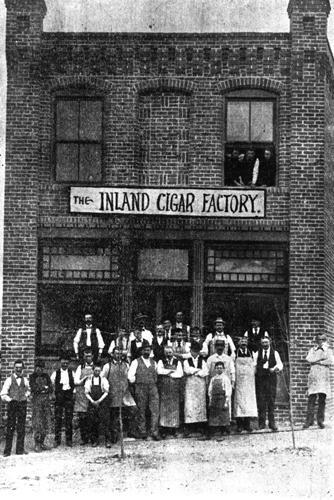
The International Craft Unions
The Knights’ loss of support fed the growth of a new labour centre. In the United States, this took the form in 1886 of the American Federation of Labor (AFL), headed by the cigar makers’ leader, Samuel Gompers. The same year, the Canadian equivalent — the Trades and Labour Congress — was established as a federation of local Labour Councils in the major cities. Canadian unions were the rule, not the exception at this time. Gompers’ goal, however, was to unite Canadian and American workers along international craft lines.
While Canadian politicians were engaged in nation-building, skilled workers were simultaneously looking to international organizations for their future. Immigrants to Canada brought with them the labour traditions of their homelands and awareness that there were organizations onto which Canadians might graft their own. Some of the first international unions in Canada were based in Britain, but it was American craft unionism that led the way. Coopers, iron moulders, and shoe makers established cross-border alliances and shared strategies back and forth. Withdrawal of labour (in a strike) was invariably countered by employers with the introduction of new workers who were referred to as strikebreakers or, in the colloquial, scabs. Strikers had to adopt tactics to keep out strikebreakers, whether at the factory door or at the international border. Violent conflict between strikers and strikebreakers was a common occurrence and US-based organizations helped Canadian craft unions by discouraging American workers from playing the strikebreaker role, and by providing financial resources to sustain their Canadian partners.
International unionism of this kind took place in an industrial environment dominated by Great Lakes cities like Toronto, Buffalo, Hamilton, Cleveland, Windsor, and Detroit. Workers moved back and forth over the borders and across the lakes, raising the prospect of American strikebreakers showing up during Canadian disputes, and vice versa. There was also the possibility that, during strikes, factories on one side of the frontier would flood markets on the other side with goods in such a way that the striking union’s position would be undermined. Speaking with one voice had distinct advantages and clearly many Canadian craft workers agreed. The AFL-TLC alliance would prove to be a very long-lasting one.
AFL influence over Canadian locals increased through the 1890s, and in 1902 AFL elements took control of the TLC at its annual conference. The AFL’s Canadian organizer, John Flett, was elected president; Knights and Canadian unions alike were expelled.
Industrial Unions and the IWW
The 1902 break with non-craft and purely Canadian organizations, however, left a gulf in the state of labour organization.
The process of deskilling was one factor in the rise of industrial labour. Another was the creation of wholly new industries unrelated to the sorts of things done by craft workers 50 years earlier. A good, and often militant, example was the street railway sector in the major cities, most of which were run by private businesses and none of which could be said to displace an older mode of production.
Both new industries and deskilling led to growing numbers of workers with limited skills to defend themselves, and a greater likelihood that they would face instability over their working career. Once work had achieved a degree of mechanization and automation, or where it had been reduced to the simplest of physical labours, it was possible to create a class of workers for whom apprenticeships held no attraction and few advantages. This class of less skilled worker, however, was an interchangeable part, easily dismissed and easily replaced. In addition, the industrial worker lacked the cultural capital of the craft and even the trade worker. There was no associational tradition, no history of organization or mutual support on which to erect a new movement. Industrial workers were often new immigrants with limited abilities in French or English which put them at a further disadvantage. If they were recruited by labour agents they might be obliged to work to repay their immigration costs, so they were financially vulnerable, too, and sometimes fearful of deportation. Nevertheless, no class of workers posed as significant a threat to the ascent of capitalism as the industrial workers, particularly in the form of the Industrial Workers of the World (the IWW).
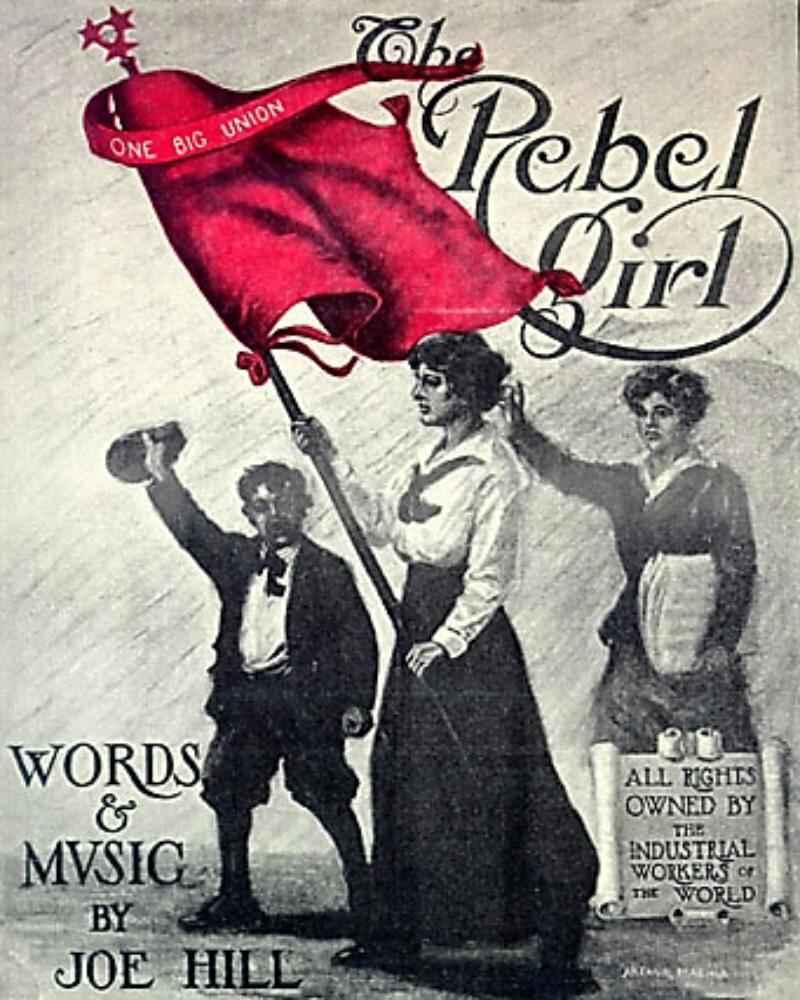
The qualities that made industrial labour desirable from the perspective of capitalism, also made it dangerous. The very mobility of the unskilled meant that they were difficult to discipline. They were most often found in resource extraction industries like the silver mines and smelters of the Kootenays in BC, where single (or at least wife-less) men dominated. The Western Federation of Miners (WFM) organized many of these workers and preached a radical doctrine that disturbed the AFL-TLC. Their low skill levels meant that they moved from one industry to the next, from road building to dock work to mills and lumber camps. This interchangeability made it possible for the IWW to talk about one big union, an organization that took in everybody, including Asian-Canadians. As one West Coast Socialist Party leader said in 1912, “workers must get wise to the fact that what is needed is bigger unions and less unions.”[8]
Employers certainly didn’t pull their punches in response. A pronounced lack of solidarity from the crafts unions did not help matters, but employer intrigue, use of private security companies, subversion of the unions, and deployment of local militias both punished and galvanized the industrial unions. A good example of this is the 1903 waterfront strike in Vancouver, led by the United Brotherhood of Railway Employees (UBRE) against the CPR. The local labour leader, Frank Rogers, was elevated to the ranks of “labour martyr” when he was shot to death on the docks. The UBRE’s position became increasingly untenable but strike activity spread to the coal mines at Extension on Vancouver Island. There, the WFM was engaged in its own struggle, one that was painted by the CPR (one of the main clients for coal from the Extension mine near Ladysmith) as an illegal sympathy strike. John Hinde, describing the reaction of authorities in Victoria, Ottawa, and the boardrooms of the CPR, captures the intersection of class-warfare and nationalist sensibilities of the time:
Fearful of sympathy strikes, an unambiguous statement of union and working-class power, the authorities subsequently led a frontal assault on the strikers and their unions. […] they viewed the Extension strike as part of a wider conspiracy by illegitimate revolutionary socialist organizations affiliated with American labour interests to disrupt the Canadian economy and to corrupt Canadian workers, and were therefore determined to crush the union.[9]
This confrontation hurt the WFM, which began a downward spiral from which it never recovered. Some of its American leadership — the most noteworthy being William “Big Bill” Haywood (1869-1928) — shifted their energies to a new industrial union, the Industrial Workers of the World.
The IWW (nicknamed the Wobblies on account of the way some immigrant members pronounced the W’s), was the antithesis of the parallel layers of craft unions organized along skill lines and working in a particular industry. The Wobblies called for a singular labour organization to which every individual worker could belong. It was mobilized by one idea: the defeat of capitalism.
Not only did the IWW propose to dismantle the business unions of the AFL and dilute the skill pool within the craft and trade unions, it proposed to overturn the system entirely and favoured a socialist alternative. The instrument with which the IWW proposed to accomplish this was an all-encompassing labour action, a general strike. Building toward this goal involved several sectoral strikes along the way.
The Pre-War Labour Revolt
Labour unrest was increasing from 1896 on, but it spiked in the years leading to the Great War. In 1901, there were 99 strikes and lockouts. This number peaked in 1907 at 188, and then again in 1912 at 181. The number of employees involved leapt from 285 in 1901 to more than a thousand in each of 1903, 1910, 1912, and 1913. What was most dramatic, however, was the aggregate number of working days lost. In 1901, it was 737,808 but by 1911 it had reached 1,821,084.[10] Labour relations were badly unsettled and strikes got both longer and more numerous between 1910 and 1913.[11] This pattern includes the dramatic Canadian Northern Railway (CNR) strike of 1912, which involved some 7,000 railway construction workers drawn from more than a dozen different language groups.[12]
Whenever workers in pre-WWI Canada went on strike, they knew that they were stepping into a legal minefield. The right to strike was not enshrined and striking was the equivalent of breaking a contract, which subjected workers to the possibility of federal state intervention. Immigrant workers faced deportation. In some industries, particularly during wartime, labour stoppages were tantamount to treason. Even in peacetime, the militia was not infrequently dispatched to protect strikebreakers and evict strikers from company housing. In these circumstances, the interest of the state and capital were unambiguously aligned.
Of the international trade unions in this period, the United Mine Workers of America (UMWA) stands out. It had a powerful influence in the coal- and metal-mining communities in Nova Scotia, Alberta, British Columbia, and elsewhere. The UMWA followed craft union strategies, focusing on working conditions and wages, but it would be an error to understate its militance. In the hardrock mines of the Kootenays and the collieries of the Crowsnest Pass, the UMWA emerged as the dominant international trade union. The union was in Lethbridge, too, and in 1906 there erupted a strike that lasted for nine months. What was significant about this confrontation — one of many in a period marked by intensifying labour-capital conflict — is the role played by the state. A 32 year old bureaucrat in Ottawa, William Lyon Mackenzie King (1874-1950), the Deputy Minister of Labour since 1900, was sent to Alberta to diffuse the situation. (Winter was coming and there were fears of a “coal famine” on the Prairies.) This third-party bargaining was a novel approach and it had the effect of reducing the strikers’ strength even though the employer might have buckled. King followed this up with the Industrial Disputes Investigations Act (IDIA) of 1907, legislation that inserted the federal government as a third-party in specific kinds of labour disputes. Whenever the IDIA was invoked, strikers were required to return to work in a cooling-off period while bargaining proceeded. The effect was to build up stockpiles of goods so that the employer was no longer desperate for a settlement.[13] The unions, naturally, hated this.
It was this context of growing confrontation and frustration at the intransigence of employers, government, and business unions, which radicalized parts of the Canadian workforce and labour movement. The Wobblies’ appeal reflects the limitations of craft unionism, particularly in sectors that would not be organized by the crafts. Faced with some of the worst and most dangerous working conditions, the posture of the IWW and the One Big Union (OBU) movement became more radical. It took on employers but it also took on the law. The Free Speech protests of 1909 and 1912 in Vancouver, are a good example of confrontations in which the Wobblies played a key role, and which were not specifically about working conditions or wages.[14]
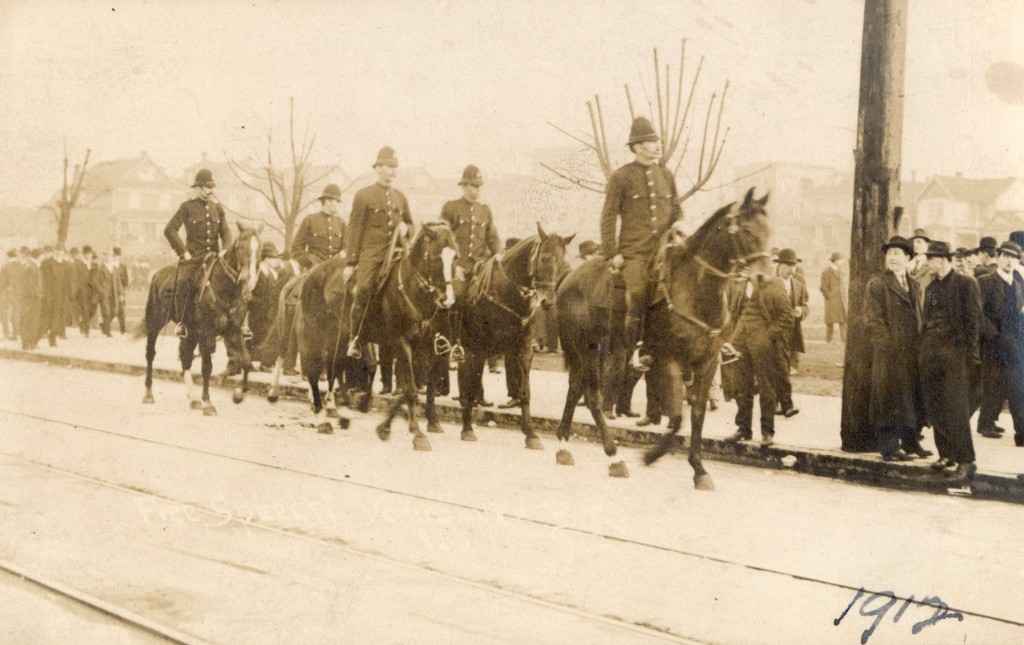
The militance of the pre-Great War years crested in 1912 but threatened to resume in 1914. As far as the anti-labour elements were concerned, in this regard the war arrived just in time. Wartime conditions and the radicalization of the working class globally, however, would present very different conditions in the period from 1914-1920.
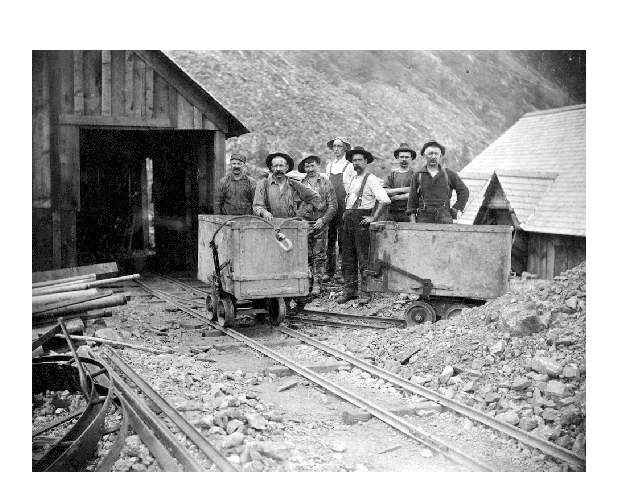
Key Points
- The creation of an industrial working class created new tensions in Canadian society.
- The ability to organize into defensive associations or unions arrived in the 1870s.
- Craft unions represented the most skilled and best paid workers, and presented the respectable face of labour.
- The Knights of Labor originated in the United States and organized workers from across many crafts and industries into one body.
- Individual craft unions pursued a more confrontational approach and built international bodies to advance their interests, with the AFL emerging as the dominant labour organizer.
- Deskilling and new kinds of work produced a population of less skilled industrial workers who, in the absence of support from the international craft unions, established industrial unions.
Media Attributions
- Toronto Labour Day Parade is licensed under a Public Domain license
- Knights of Labour Procession on King Street, 1865 © W. Farmer, Library and Archives Canada (PA-103086) is licensed under a Public Domain license
- Historic view of the Inland Cigar Factory, 1895 © City of Kamloops Museum and Archives, #8490 is licensed under a Public Domain license
- “The Rebel Girl” Cover, 1915 is licensed under a Public Domain license
- Mounted police at a “Free Speech” demonstration on the Powell Street Grounds © Major James Skitt Matthews, City of Vancouver Archives (CVA 371-971) is licensed under a Public Domain license
- Tariff Mine near Ainsworth, 1897 is licensed under a Public Domain license
- Paul Craven, “'The Modern Spirit of the Law': Blake, Mowat, and the Breaches of Contract Act, 1877,” Essays in the History of Canadian Law: In Honour of R.C.B. Risk, eds. G. Blaine Baker and Jim Phillips (Toronto: Osgood Society for Canadian Legal History/University of Toronto Press, 1999): 159, 162. ↵
- Craig Heron, The Canadian Labour Movement: A Short History, (Toronto: James Lorimer & Company, 1989), 16. ↵
- Because the Knights began in the United States, the American spelling of “labor” is always applied. ↵
- Craig Heron, The Canadian Labour Movement: A Short History (Toronto: James Lorimer & Company, 1989), 26. ↵
- Nive Voisine, “TASCHEREAU, ELZÉAR-ALEXANDRE”, in Dictionary of Canadian Biography, vol. 12, University of Toronto/Université Laval, 2003–, accessed 29 June 2015, http://www.biographi.ca/en/bio/taschereau_elzear_alexandre_12E.html. ↵
- Palmer, Working-Class Experience, 131. ↵
- Canada, Sessional Papers, Royal Commission on Chinese Immigration, no.54a (Ottawa: 1885): xvii, 88, 158. ↵
- R.P. Pettipiece, quoted in Mark Leier, "Solidarity on Occasion: The Vancouver Free Speech Fights of 1909 and 1912," Labour/Le Travail, 23 (Spring 1989): 56. ↵
- John R. Hinde, When Coal Was King: Ladysmith and the Coal-Mining Industry on Vancouver Island, (Vancouver: University of British Columbia Press, 2003), 133. ↵
- Statistics Canada, Historical Statistics of Canada, 2nd ed., ed. F. H. Leacy (Ottawa: Statistics Canada, 1983): E190-208. ↵
- Statistics Canada, Historical Statistics of Canada, 2nd ed., ed. F.H. Leacy (Ottawa: Statistics Canada, 1983): E190-197. ↵
- Craig Heron, The Canadian Labour Movement: A Short History, (Toronto: James Lorimer & Company, 1989), 43. ↵
- H. Blair Neatby, “KING, WILLIAM LYON MACKENZIE”, in Dictionary of Canadian Biography, vol. 17, University of Toronto/Université Laval, 2003–, accessed 29 June 2015, http://www.biographi.ca/en/bio/king_william_lyon_mackenzie_17E.html. ↵
- Mark Leier, "Solidarity on Occasion: The Vancouver Free Speech Fights of 1909 and 1912," Labour/Le Travail, 23 (Spring 1989): 39-66. ↵
Negotiation of working conditions, pay, and other issues or benefits by an association — a “union” — of employees. Replaced the many individual arrangements made in one-on-one agreements.
A national association of craft unions modelled on the American Federation of Labor; established in 1883 and merged with the Canadian Congress of Labour (CCL) in 1956 to create the Canadian Labour Congress (CLC).
Founded in 1956 in a merger of the Trades and Labour Congress (TLC) and the Canadian Congress of Labour (CCL). Subsequently joined with the Cooperative Commonwealth Federation (CCF) to create the New Democratic Party (NDP).
Mechanization and automation of work, as well as assembly lines permits the systematization of work and a commensurate reduction in the skills and training needed to perform key functions. The work is said to be deskilled and, thus, the workforce too is deskilled.
A term used and an ideal pursued by mid-19th century organized labour — particularly skilled craft workers — and some of their successors; embraced the ideals of fair treatment, law-abiding behaviour, equality, and a commitment to the nation’s stability and growth. Manifest in many ways including working class campaigns for literacy, temperance, and rational recreation.
The diplomatic business of negotiating contracts and conditions between employers and employees; typically between employers and labour organizations (unions).
Established in 1886 as an umbrella organization of craft unions in the United States.
Colloquial term for a worker who continues working, or who takes a job, while a strike is ongoing. Also called a scab.
In the first instance, the idea (pioneered by the Knights of Labor) that working people should belong to a single organization that can fight for their rights collectively; secondly, an actual organization — the OBU — formed after 1919, as a revolutionary industrial union (which included workers in support of the Bolshevik and other left-wing revolutions).
A labour stoppage by supportive workers who are not directly involved in a dispute.
Trade or craft unions that approach activism from a non-revolutionary position; associated with the unions of the AFL, the TLC, and — later — the CLC.
A labour stoppage involving most or all unions or workplaces. General strikes have been held that call on all workers in a particular city or a particular sector or across an entire country.

